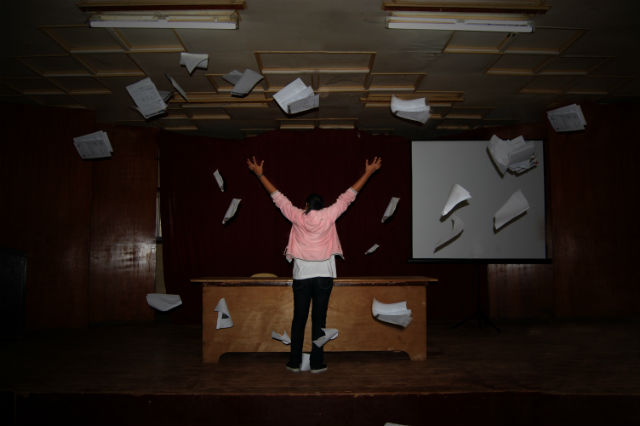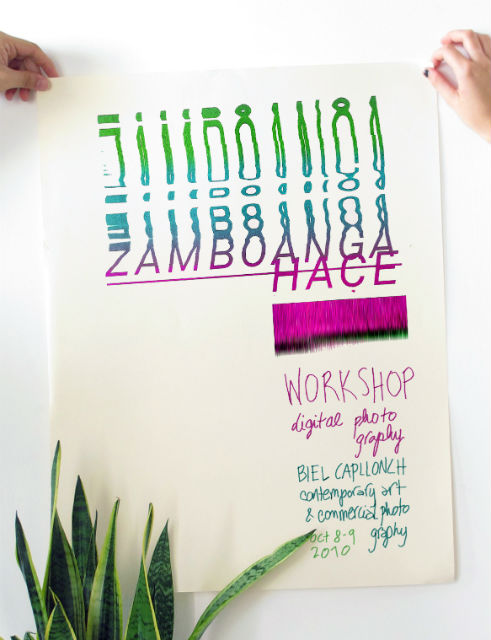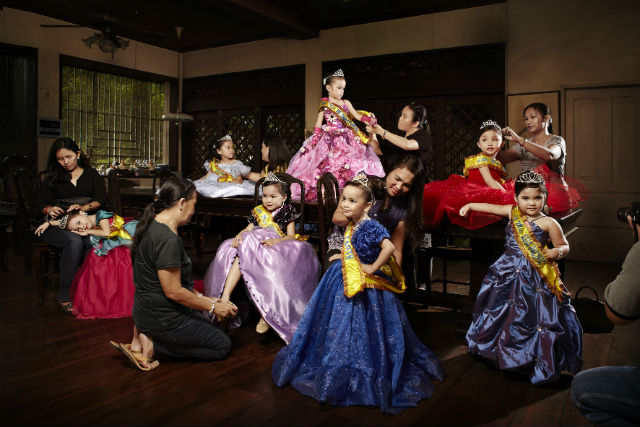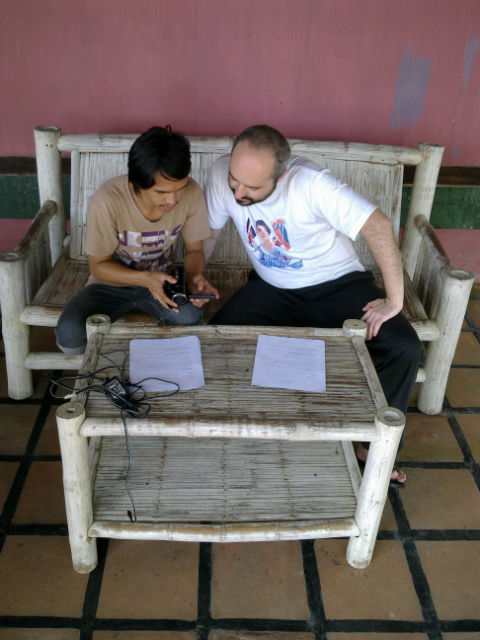At the southernmost tip of the Philippines, a revolution is brewing. Armed with borrowed cameras, students from Western Mindanao State University shoot scenes in their hometown, Zamboanga City. In a classroom, they make intricate vernacular typeface inspired by folk typographies seen on the streets of Zamboanga. At the annual Zamboanga Hermosa festival, they gather the participants and capture them backstage.

Student artwork from Zamboanga Hace 1 taken by Roderick Cordura
For the past two years, around 80 students from WIMSU have been taking part in Zamboanga Hace, a series of contemporary art workshops organized by The Office of Culture and Design (TOCD). "It's about teaching them critical, creative, open thinking and trying to encourage them to think differently and challenge the kinds of boxes they've been educated to think inside," explains TOCD's Clara Balaguer. Since October 2010, Zamboanga Hace has invited five contemporary artists and designers to work with the students, and to do a body of work on the city. The series began with a digital photography workshop by Spanish photographer Biel Capllonch, where the students came up with a commissioned portrait series, which Balaguer describes as "surprisingly really good."

Poster for Zamboanga Hace 1 by Miguel Figueroa (Puerto Rico) and Rita Lino (Portugal)
She explains that they make do with what they have, which is not that much. "It's not about the quality of the equipment, it's about what you put in to the equipment," she says. Even when things got a bit more complicated when Spanish filmmaker Carlos Casas held an independent film workshop, the resourceful students were able to make things work. "It can be a huge problem," says Balaguer, adding that she brought in her computer and a digital camera for the students to use. "It's so easy to do things like this because the students are so willing to find solutions. I think a lot of people underestimate Filipinos in general but if you give them freedom to think of their own solutions they come up with really, really great ones. It's a place where they can be free to think differently," she says. At the Zamboanga Hermosa festival, the participants gathered in an ancestral house instead of the students just going to the event and photographing them there. "We kind of decontextualized them. The idea was to turn them into paintings almost, play with the composition," recalls Balaguer. At the end of the series, all the artworks will be published in a catalog and exhibited at a major cultural exhibition. "We're hoping that there'll be two exhibits, one here and one in Spain. So if any of them want to become contemporary artists, at the age of 19 or 20 they have two major exhibits at two major institutions which is huge for any artist anywhere in the world," says Balaguer.

Miss Zamboanga contestants featured in the final artwork of Biel Capllonch for the photo series commissioned by The Office of Culture and Design
Even without the exhibits, the students are already accomplishing quite a lot. Apart from producing their own short films and coming up with portraits, they completed a commissioned editorial project in a workshop on vernacular graphic design by Miquel Polidano, a Spanish graphic designer and the founder of Triangulo Editorial. In the next and last in the Zamboanga Hace series, The Institute of Infinitely Small Things will hold a workshop on performance and public art. Based mostly in Boston, the art collective incorporates human behavior experiments into artistic performances. "They're very much into participative art, and they like to involve innocent bystanders in their work. It's kind of like an exponentially growing social experiment," explains Balaguer. Although this is the last series in Zamboanga Hace's first cycle, TOCD would like to keep on doing it. Like many other projects, it's just a matter of finding the supporters. "If you really want to change the world, it's a long process. It's not enough to just be there for a couple of years," says Balaguer.

Carlos Casas with student of Zamboanga Hace 3 who won best film director prize.
While the project may not be changing the world just yet, it certainly makes a difference in the lives of the students, and also of those who work with TOCD, Balaguer included. After the independent film workshop, they held a screening, and awarded one of the students. "We gave him best film and best director. Everyone was rooting for him to win because he's one of the kids who would always have to borrow the camera or exchange it for working on something," says Balaguer, who decided to give the student the camera they bought for students to use during the workshop. "We didn't plan it but when we gave him the camera and everybody was cheering for him it was kind of like, I felt like I was on American Idol. I thought, this is what I should be doing with this money. There's nothing better that I could have done," says Balaguer, who left her advertising job to set up TOCD. "When I turned 30 I kind of took stock of my life and what I had left behind and what I had in front of me and what I had in the present, and I realized that I had kind of turned my back on my roots. I felt like I had things to do here in the Philippines," says Balaguer, who returned after seven years when her mother fell ill. "I guess because you go through this whole process when you lose a parent or when anybody close to you dies, you there's this moment of illumination and you're like, what am I going to do with my life?" she says. The answer, it turned out, was to move back to Manila and open TOCD, which she says is all about using contemporary culture to spark progress. Apart from Zamboanga Hace, TOCD has several other projects, including one founded with Canadian street artist Kaid Ashton called Homeschool, where volunteer teachers hold workshops for children on the streets of Manila. To find out more about Zamboanga Hace and other projects of TOCD, visit their
website.
- BM, GMA News Photos courtesy of The Office of Culture and Design 






